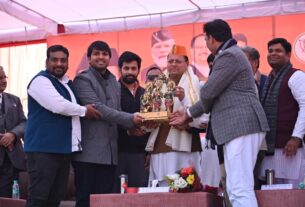Dehradun, the serene capital city of Uttarakhand, India, has experienced rapid urbanization and a surge in population from 3,63,000 in 1990 to 9,92,000 in 2023 as per UN projections which is almost triple than in 1990, resulting in increased mobility demands. This case study examines the current state of public transportation in Dehradun, focusing on its challenges and future plans.
Current Public Transportation Scenario:
The existing public transportation system in Dehradun primarily revolves around three main modes: buses operated by the Uttarakhand Transport Corporation (UTC) and shared autorickshaws, commonly referred to as “Vikrams.” Vikarms run across 9 fixed routes covering the most parts of the city.
Dehradun Smart City Limited had recently launched 30 electric buses in city which have been quite popular across 5 different routes.
There is a fleet of 389 buses traversing across 11 routes and a length of 198.96 Kms. There is also feeder bus connectivity across 4 routes. The city has 4.96 per Km of daily ridership. The routes covered are, such as Clement Town to Rajpur, Parade Ground to Raipur, Parade Ground to Rajpur, Parade Ground to Sahastradhara and Prem Nagar to Raipur.
Also, in the last 10 years the city has been a witness to a sharp rise in unorganized sector with e-Rickshaws. Dehradun Smart City has also commissioned 200 e-Rickshaws in the city in an organized manner.
The soon to be launching Neo Metro will be a good start to the mass transit scenario in the city. Initially planned for 2 corridors. The project may expand based on the response and ridership obtained from the initial years of service.
However, the frequency, reliability and coverage of these services remain limited, causing inconvenience for commuters. Even after multiple options available the transit ridership share is only 26% for the city as per the comprehensive mobility plan of the Dehradun-Haridwar-Rishikesh metropolitan area. 19% mode share is attributed to pedestrians and other non-motorized transport like manual rickshaws, cyclists etc. If we consider this modal share only for the urban area of Dehradun the public transport share may drop to less than 20% or even lesser. However, with more and more congestion and less safe corridors, the pedestrian and cyclist share is struggling to maintain itself and may decline by the next survey by the government. 95% of vehicles plying o the city are private vehicles. Despite these routes, the lack of dedicated bus lanes and traffic congestion adversely impact the efficiency and appeal of public transportation.
Challenges Faced by Dehradun Residents:
- Inadequate Coverage: The limited number of bus routes and the absence of well-planned shared autorickshaw routes result in insufficient coverage of key areas within the city.
- Reliability Issues: Public transport is not dependable, causing delays.
- Limited Availability and Frequency of E-Buses: Waiting for long periods for an e-bus makes inconvenient for regular use, forcing commuter to use private vehicles instead.
- Overcrowding and Affordability: Vikram drivers wait for the vehicle to be full before departing, inconveniencing many passengers who cannot afford private transportation.
- Traffic Congestion: Dehradun witnesses significant traffic congestion during peak hours, especially on busy roads like Rajpur Road and the Clock Tower area, causing delays and frustration among commuters.
- Environmental Concerns: The escalating number of private vehicles contributes to air pollution, affecting the city’s air quality and the health of its residents.
- Pedestrian and Cyclist Safety: The lack of proper footpaths and dedicated cycling lanes endangers pedestrians and cyclists, discouraging sustainable transportation choices. Despite resorting to walking and cycling, heavy traffic and increased pollution make it difficult to use a bicycle as an alternative.

Future Plans and Schemes:
The Dehradun masterplan and associated schemes envision a well-connected and sustainable public transportation network for the city’s future. Key initiatives include:
- Neo-Metro Connectivity: The proposed neo-metro system aims to alleviate traffic congestion and improve accessibility by connecting significant areas such as Rajpur Road, ISBT, and Ballupur. It would be a better approach to plan ahead for first and last mile connectivity for the Neo-Metro project, so it is utilized more efficiently in the city and the revenue model shows enough stability. This would lead to faster network growth and future expansion.
- E-Bus System: The expansion of E-bus services is expected to provide more relief to the commuters willing to travel from public transport.
- Pedestrian and Cyclist Infrastructure: The masterplan emphasizes constructing pedestrian-friendly zones and dedicated cycling lanes along roads thereby promoting sustainable and safe mobility options.
Suggested Measures to Improve Public Transportation:
- Expanding Public Transport Fleet: Increasing the number of buses and e-Rickshaws in the fleet, especially along underrepresented routes like Route 4 (Nehrugram to Selaqui), will enhance the availability and convenience of public transportation.
- Priority Lanes and Traffic Management: Designating exclusive bus lanes along Rajpur Road and ISBT routes, coupled with effective traffic management measures, will optimize bus speeds, and reduce congestion. Separate right of way for buses is not possible in Dehradun’s hilly terrain so BRT is not an option. However, to enhance the speed and efficiency of bus systems, lane enforcement can be implemented.
- Last-Mile Connectivity: Implementing feeder services, such as shuttle buses or electric rickshaws, from ISBT to residential areas like Nalapani, amongst many other underserved areas will improve last-mile connectivity and encourage public transportation use.
- Affordable Fare Structure: Introducing a fare structure that is affordable and adaptable to diverse income groups will attract more commuters to opt for public transportation.
- Public Awareness Campaigns: Conducting extensive awareness campaigns about the benefits of public transportation and sustainable mobility will foster behavioural change.
- Promotion of Non-Motorized Transport: Creating bike-sharing stations along key routes like Rajpur Road and Ballupur and establishing pedestrian-only zones in Clock Tower and Paltan Bazaar will encourage cycling and walking.
Dehradun’s public transportation scenario presents both challenges and opportunities for improvement. The masterplan and proposed schemes hold the promise of a more efficient, accessible, and eco-friendly transportation system for the city’s future. By addressing the concerns faced by residents and adopting measures that prioritize equity and multimodal facilities for pedestrians and cyclists, Dehradun can pave the way for a sustainable urban mobility landscape. Active collaboration between city authorities, urban planners, and residents will be critical in turning this vision into reality, making Dehradun a model city for exemplary public transportation. The city council must actively appoint transportation planners for implementing and evaluating various transportation projects and initiatives in the city.

Author
Dr. Mansha Swami is a Transportation Engineering Consultant, Researcher and Academician and is currently working as a Postdoctoral Research Associate at the University of Texas at Arlington, United States.
She has been working as an advisor to various government, semi-government and private organizations in transportation planning, urban multimodal transport, traffic, road safety and highway sector in India. Have been Consulting in the following domains in Transportation since a decade. Transportation Planning, Multimodal Public Transportation Planning, Traffic Engineering, Road Safety Audit and Planning – Accident Studies, Black spot rectification, Forensic Crash Investigation & Sustainable Urban Transport Policy Design She pursued her PhD. in Transportation Planning & Engineering from Indian Institute of Technology, Roorkee (India) and Masters in Transportation from SVNIT, Surat (India).
Author’s Blog Address: https://transportationinsights.blogspot.com/2023/05/the-gloomy-fitness-mobility-situation.html


